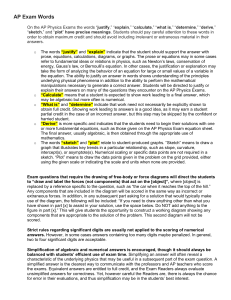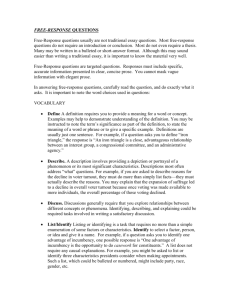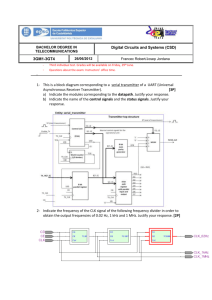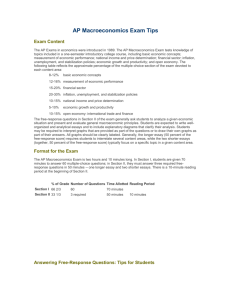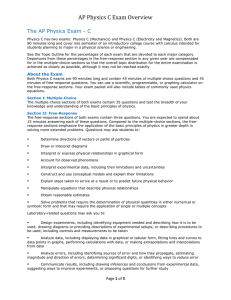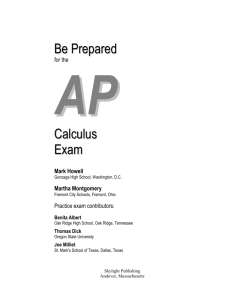AP Free Response Directions
advertisement
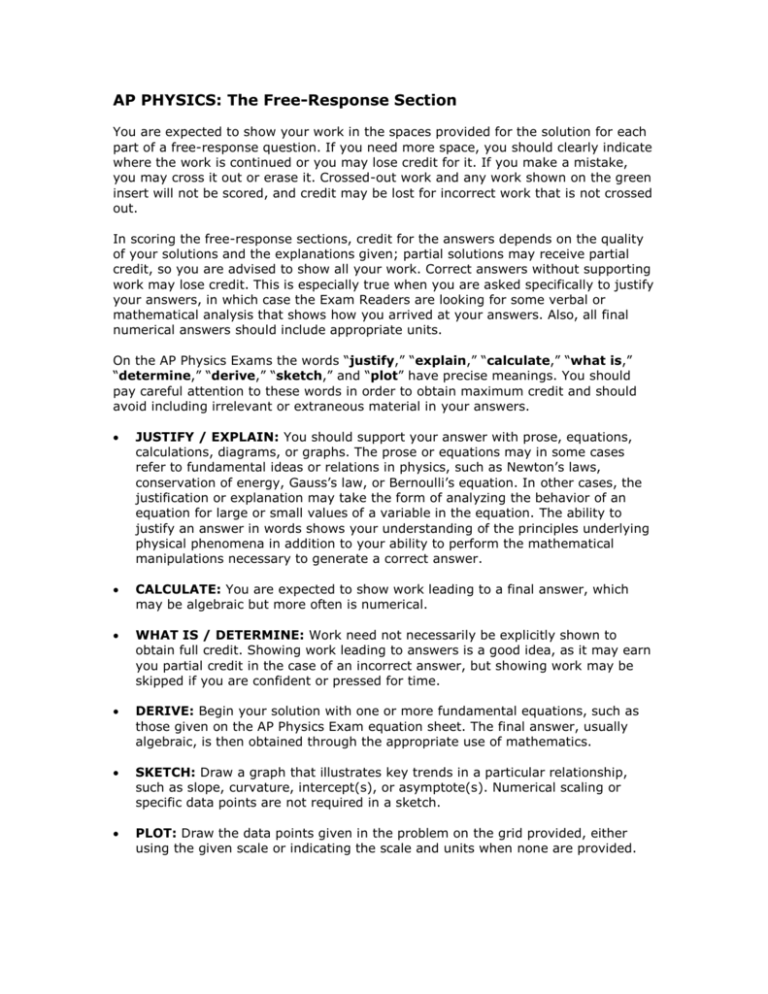
AP PHYSICS: The Free-Response Section You are expected to show your work in the spaces provided for the solution for each part of a free-response question. If you need more space, you should clearly indicate where the work is continued or you may lose credit for it. If you make a mistake, you may cross it out or erase it. Crossed-out work and any work shown on the green insert will not be scored, and credit may be lost for incorrect work that is not crossed out. In scoring the free-response sections, credit for the answers depends on the quality of your solutions and the explanations given; partial solutions may receive partial credit, so you are advised to show all your work. Correct answers without supporting work may lose credit. This is especially true when you are asked specifically to justify your answers, in which case the Exam Readers are looking for some verbal or mathematical analysis that shows how you arrived at your answers. Also, all final numerical answers should include appropriate units. On the AP Physics Exams the words “justify,” “explain,” “calculate,” “what is,” “determine,” “derive,” “sketch,” and “plot” have precise meanings. You should pay careful attention to these words in order to obtain maximum credit and should avoid including irrelevant or extraneous material in your answers. JUSTIFY / EXPLAIN: You should support your answer with prose, equations, calculations, diagrams, or graphs. The prose or equations may in some cases refer to fundamental ideas or relations in physics, such as Newton’s laws, conservation of energy, Gauss’s law, or Bernoulli’s equation. In other cases, the justification or explanation may take the form of analyzing the behavior of an equation for large or small values of a variable in the equation. The ability to justify an answer in words shows your understanding of the principles underlying physical phenomena in addition to your ability to perform the mathematical manipulations necessary to generate a correct answer. CALCULATE: You are expected to show work leading to a final answer, which may be algebraic but more often is numerical. WHAT IS / DETERMINE: Work need not necessarily be explicitly shown to obtain full credit. Showing work leading to answers is a good idea, as it may earn you partial credit in the case of an incorrect answer, but showing work may be skipped if you are confident or pressed for time. DERIVE: Begin your solution with one or more fundamental equations, such as those given on the AP Physics Exam equation sheet. The final answer, usually algebraic, is then obtained through the appropriate use of mathematics. SKETCH: Draw a graph that illustrates key trends in a particular relationship, such as slope, curvature, intercept(s), or asymptote(s). Numerical scaling or specific data points are not required in a sketch. PLOT: Draw the data points given in the problem on the grid provided, either using the given scale or indicating the scale and units when none are provided.
